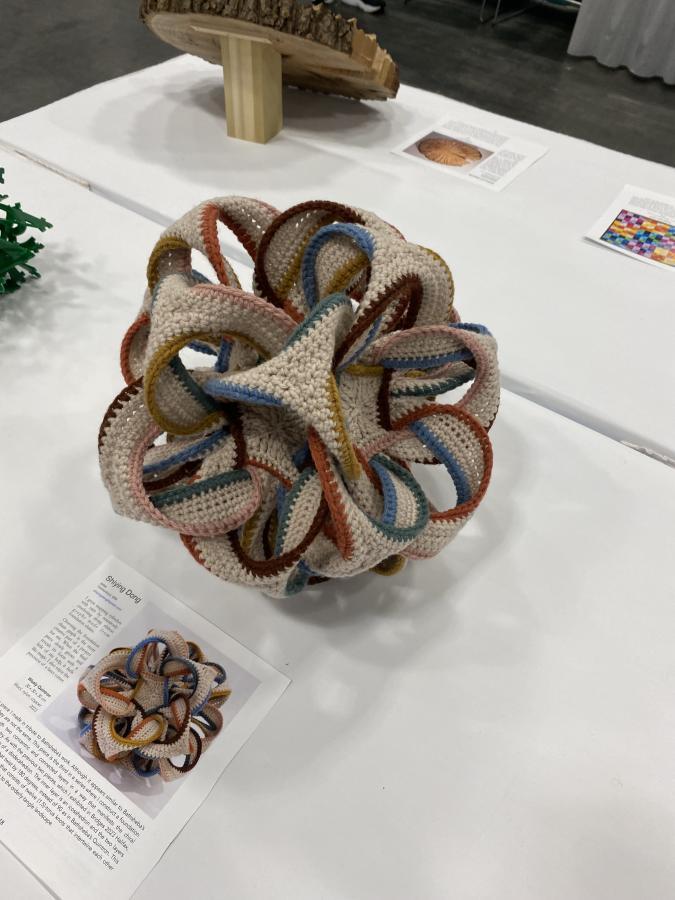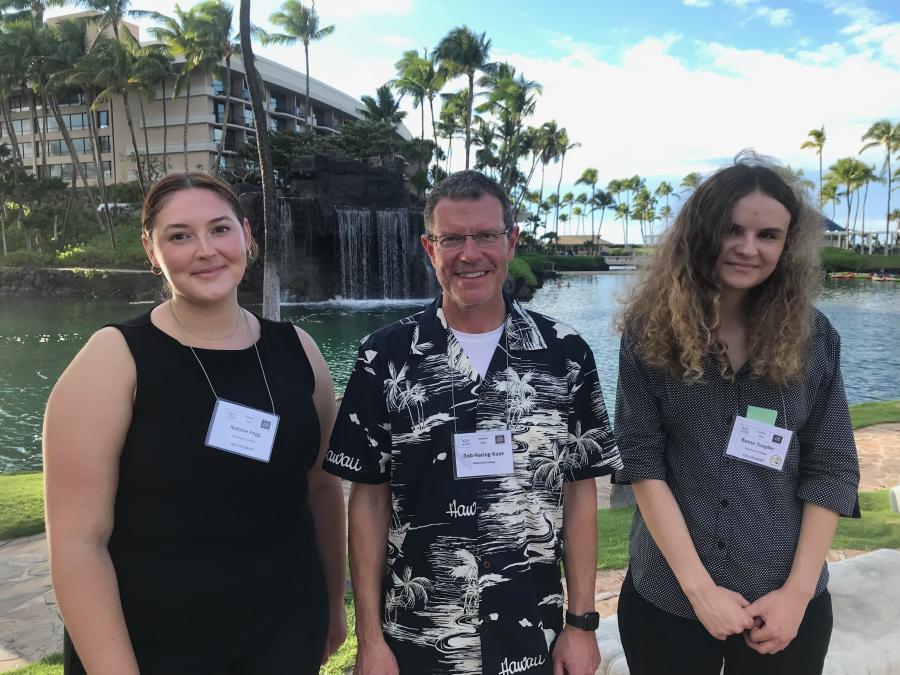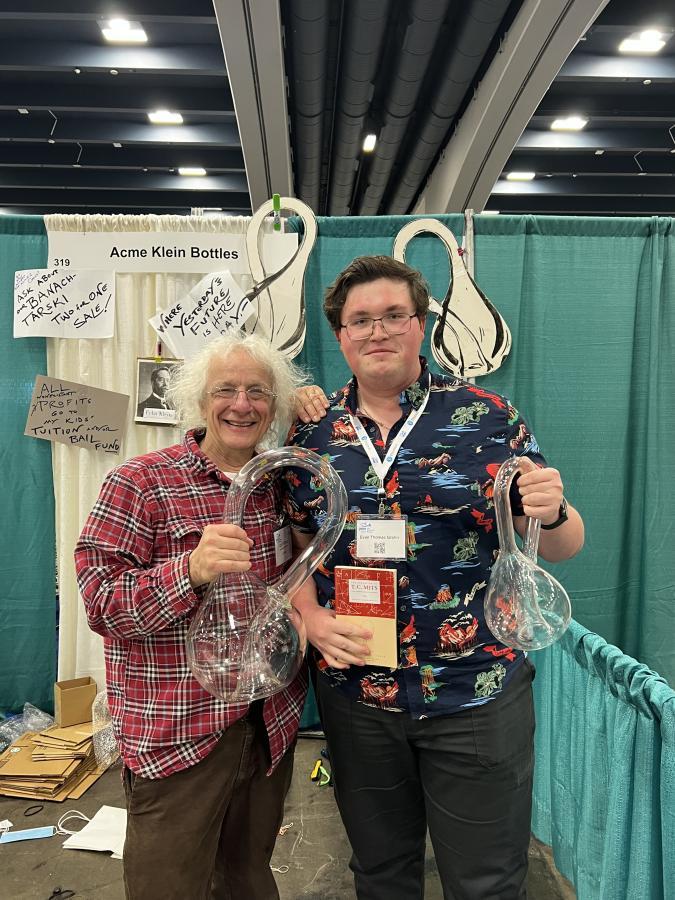Magazine Spring 2024 Massive Meeting of Math Minds
“I was surprised at the sheer size of the math world,” said first-year student Isaiah Conway about his trip with fellow students and professors to the world’s largest mathematics conference in January in San Francisco. Ten students and three faculty members joined nearly 6,000 other mathematicians at the annual Joint Mathematics Meetings (JMM) hosted by the American Mathematical Society.
“I’d never been exposed to the different fields, the different problems, the organizations, the people, or even the math celebrities,” Conway said. “I learned so much about the vast community of mathematics in one weekend, and I want to learn so much more.”
At the event, Maryke van der Walt, Westmont associate professor of mathematics, spoke about her research, “A function approximation approach to the prediction of blood glucose levels,” and sophomore Sam Tang shared his summer research, “Probabilistic questions relating to a certain type of function that is analytic in the unit disk.”
Tang met a woman who spoke about chess in the Islamic world. “She’s in the process of getting her Ph.D. in philosophy of science, and it was fascinating to hear her experience and advice about graduate school, conferences, academia and the history of math,” Tang said.
Senior Bailey Hall participated in a poster presenta- tion, “Cutoff in the Bernoulli-Laplace Model with Unequal Colors and Urn Sizes,” that reported on research from her summer undergraduate research experience at Iowa State University.
Sophomore Amelia Ubben enjoyed the event’s art exhibition, which featured various media by artists inspired by mathematics and mathematicians who use visual art to express their love of mathematics. “It opened my eyes to the vast possibilities and mediums,” she said. “It’s a common misconception that a person is either math oriented or art oriented, but the exhibit proves math and art work closely together to create beautiful things.”
Ubben and sophomore Sarah Delp heard two talks about knot theory. “Studying the knotting and tangling of DNA and RNA strands and the nature of their knotting provides insight into mutation and disease in these strands,” Ubben said.
The group, which stayed at the Westmont in San Francisco house in Pacific Heights, also attended a reception for the Association of Christians in the Mathematical Sciences.
“The students had an incredible experience and were astounded at the diverse mathematical interests of the attendees, such as art, biology, epidemiology, social justice, climate change and food supply,” says Anna Aboud, assistant professor and chair of the mathematics and computer science department. “It is exceedingly rare for undergraduate students to attend, much less present at, a national conference in their discipline.”
Students Reveal Physics Findings
Two Westmont students presented their research at a joint meeting of the Nuclear Physics Divisions of the American and Japanese Physics Societies last fall on the Big Island of Hawaii. Natalie Fogg '24 and Reese Toepfer '26 joined Robert Haring-Kaye, Westmont professor of physics and department chair of physics and engineering, at the event featuring more than 100 undergraduates from both nations. The students received funding from the competitive National Science Foundation Conference Experience for Undergraduates program, which covered registration, lodging and travel costs.
“Our students perform the same kind of research that graduate students conduct at larger institutions, including complex
data processing and analysis,” Haring-Kaye says.
Both Fogg and Toepfer investigated atomic nuclei either known or predicted to exhibit pear-like shapes as they spin, an unusual characteristic of the isotopes they studied with an odd number of protons and neutrons inside. Haring-Kaye presented research on a nucleus with energies not well reproduced by contemporary theoretical predictions.
Although Fogg and Toepfer didn’t participate in the experiment producing the data they analyzed and presented in Hawaii, they hope to participate in a new experiment later this year at Florida State University’s particle accelerator lab.
“Undergraduates rarely get hands-on experience operating a particle accelerator and the associated instrumentation used to measure the products of the resulting reactions,” says Haring-Kaye, who spoke at the conference.
“Although there are no direct applications of this work, historically, fundamental research in nuclear physics has led to critical advances in technology used for medicine, safety and national defense,” Haring-Kaye says. “These include medical imaging, cancer detection and treatment, smoke detectors and monitoring cargo for contraband.”




